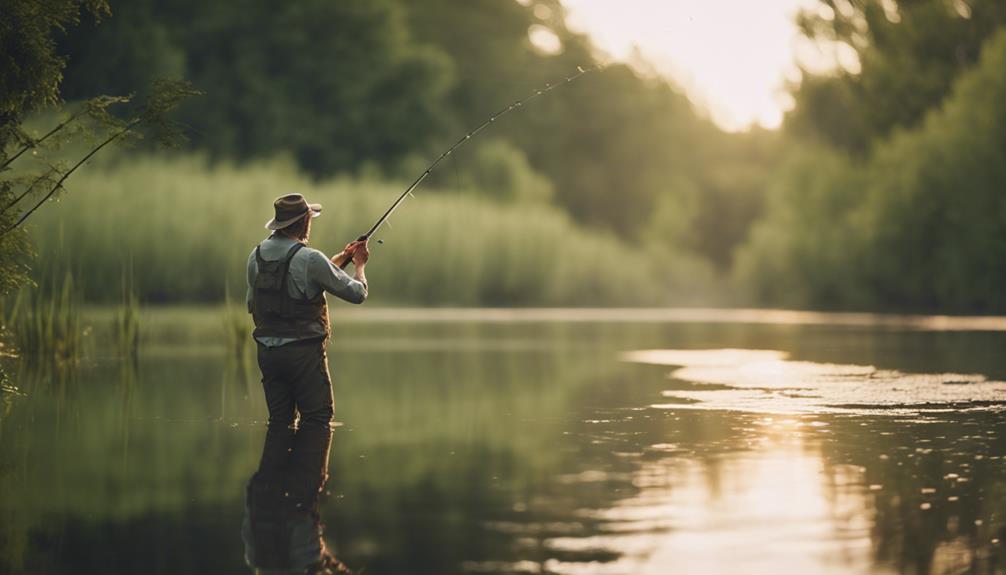White River fly fishing is an exhilarating experience that attracts anglers from all over the world. Renowned for its stunning scenery and diverse fish population, the White River offers an ideal setting for both novice and experienced fishermen. In this comprehensive guide, we will explore the ins and outs of fly fishing on the White River, including techniques, tips, and the best spots to cast your line.
Understanding the White River Ecosystem
Before diving into the techniques of white river fly fishing, it’s crucial to understand the ecosystem that supports it. The White River is a tailwater fishery, originating from the Bull Shoals Dam in Arkansas. This unique environment provides a stable temperature and flow, creating ideal conditions for trout. The river is home to both rainbow and brown trout, making it a prime location for fly fishing enthusiasts. Additionally, the river’s diverse insect life, including mayflies, caddisflies, and midges, plays a pivotal role in attracting fish, which in turn influences the strategies angler should adopt.
Essential Gear for White River Fly Fishing
To maximize your success during white river fly fishing, having the right gear is essential. Start with a quality fly rod and reel, ideally in the 5 to 6 weight range, which provides the versatility needed for various fishing conditions. Lines should include floating and sinking options to adapt to different depths. Don’t overlook the importance of a well-curated fly selection; patterns that mimic local insects can significantly improve your catch rate. Essential flies for white river fly fishing include Woolly Buggers, Pheasant Tails, and Elk Hair Caddis. Lastly, don’t forget a reliable pair of waders and boots, as these will keep you comfortable while navigating the river.
Best Techniques for Catching Trout
When it comes to white river fly fishing, mastering the right techniques can make all the difference. One of the most effective methods is nymphing, which involves using weighted flies that sink to the riverbed where trout often feed. This technique works particularly well in fast-moving water. Another popular method is dry fly fishing, which allows you to present flies that float on the surface, mimicking adult insects. Pay close attention to the hatch cycles throughout the day, as trout tend to feed more aggressively during these times. Additionally, learning to read water conditions can help you identify the best spots to cast your line, increasing your chances of landing a trophy trout.
The Best Times for White River Fly Fishing
Timing plays a crucial role in successful white river fly fishing. The ideal seasons for trout fishing are spring and fall, when water temperatures are optimal for fish activity. Early mornings and late evenings are generally the most productive times, as fish are more likely to rise to the surface to feed. Additionally, cloud cover can enhance fishing conditions, as it reduces light penetration and encourages trout to venture out of their hiding spots. Be sure to check local fishing reports and hatch charts to help you plan your trips effectively.
Top Locations for White River Fly Fishing
The White River offers numerous locations that are perfect for fly fishing. One of the most popular spots is near the Bull Shoals Dam, where the cold, oxygen-rich water creates an ideal habitat for trout. The area around Cotter is also renowned for its excellent fishing opportunities, with access to both wading and boat fishing. For those seeking solitude, consider exploring the more remote sections of the river, where you can enjoy a peaceful day of fishing away from the crowds. Remember to check local regulations and obtain the necessary permits before fishing in these areas.
Conservation and Ethical Fishing Practices
As you embark on your white river fly fishing adventures, it’s essential to prioritize conservation and ethical fishing practices. Adhering to catch-and-release guidelines helps maintain fish populations and ensures sustainable fishing for future generations. Always handle fish with care, wetting your hands before touching them to minimize damage to their slime coating. Additionally, be mindful of your surroundings and practice Leave No Trace principles by cleaning up after yourself. Respecting the river’s ecosystem and fellow anglers contributes to a positive fishing environment for everyone.
Fly Fishing Resources and Community
For those new to white river fly fishing or looking to enhance their skills, numerous resources are available. Joining local fishing clubs or online forums can provide valuable insights and tips from seasoned anglers. Many organizations also offer classes and workshops that teach various fishing techniques, knot tying, and fly tying skills. Additionally, consider investing in books or subscribing to fishing magazines that focus on fly fishing techniques and tactics. Engaging with the fly fishing community can enhance your experience and provide you with lifelong friendships.
Conclusion: Embrace the Thrill of White River Fly Fishing
In conclusion, white river fly fishing is not just a sport; it’s an experience that combines the thrill of the catch with the serenity of nature. Whether you are a seasoned angler or a beginner, the White River offers something for everyone. By understanding the ecosystem, mastering essential techniques, and respecting conservation practices, you can enjoy this beautiful resource sustainably. So grab your gear, plan your trip, and embrace the adventure that awaits you on the White River. Happy fishing!
This comprehensive guide should serve as a valuable resource for anyone interested in white river fly fishing, offering insights and practical advice to enhance their experience.
